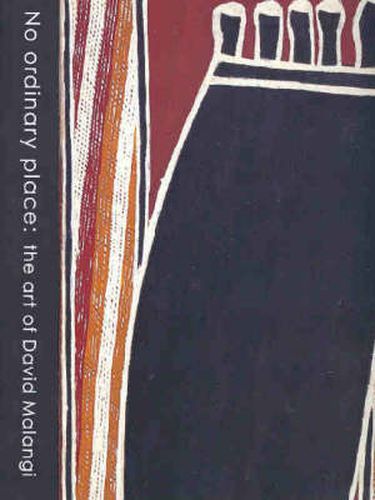Readings Newsletter
Become a Readings Member to make your shopping experience even easier.
Sign in or sign up for free!
You’re not far away from qualifying for FREE standard shipping within Australia
You’ve qualified for FREE standard shipping within Australia
The cart is loading…






David Malangi (1927 - 1999) of the Manharrngu people, was a leading figure in the development of the Central Arnhem Land bark painting movement, and holds a prominent place in Australian Aboriginal art. Made famous by his design used on the Australian one dollar note when Australia converted to decimal currency in 1966, Malangi painted prolifically over a period of four decades. This beautifully illustrated catalogue of the exhibition at the National Gallery of Australia traces the development of Malangi’s work from the early bark paintings of the 1960s to the masterful dedications to his mother’s land and culture where he spent the last thirty years of his life. It offers new research in essays by noted Aboriginal art scholars and curators who focus on the life and work of Malangi from a variety of perspectives, each focusing on the distinct aspects of the artist’s oeuvre and reflecting the important themes in the exhibition. There are also contributions from Malangi’s family, who have been an integral part of the research and preparation of both the exhibition and monograph.
$9.00 standard shipping within Australia
FREE standard shipping within Australia for orders over $100.00
Express & International shipping calculated at checkout
David Malangi (1927 - 1999) of the Manharrngu people, was a leading figure in the development of the Central Arnhem Land bark painting movement, and holds a prominent place in Australian Aboriginal art. Made famous by his design used on the Australian one dollar note when Australia converted to decimal currency in 1966, Malangi painted prolifically over a period of four decades. This beautifully illustrated catalogue of the exhibition at the National Gallery of Australia traces the development of Malangi’s work from the early bark paintings of the 1960s to the masterful dedications to his mother’s land and culture where he spent the last thirty years of his life. It offers new research in essays by noted Aboriginal art scholars and curators who focus on the life and work of Malangi from a variety of perspectives, each focusing on the distinct aspects of the artist’s oeuvre and reflecting the important themes in the exhibition. There are also contributions from Malangi’s family, who have been an integral part of the research and preparation of both the exhibition and monograph.